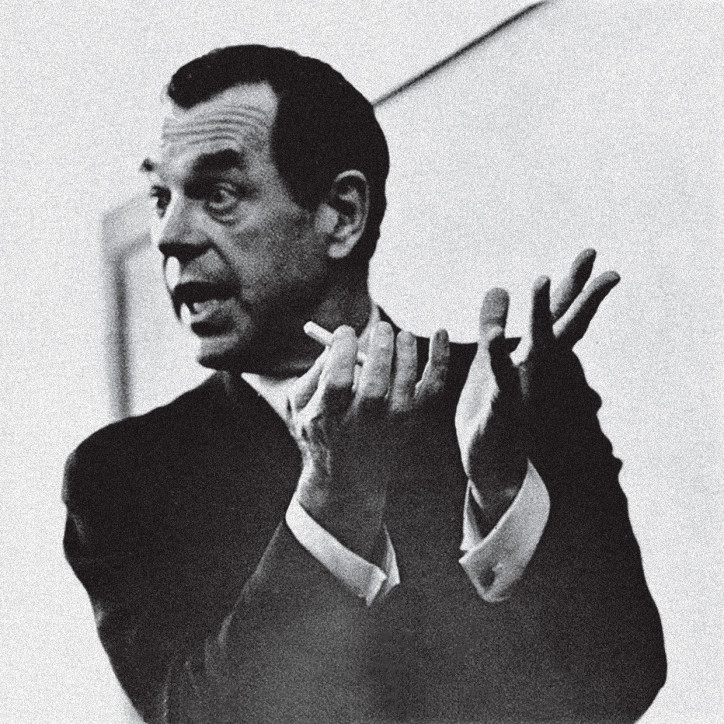Anthropology
Related: About this forumThe Hero in the Labyrinth The Pioneering Work of Joseph Campbell
Ancient stories or those collected by ethnographers; fairy tales, folk tales, and legends from across the globe; the Old Testament as well as Aztec, Egyptian, and Indian myths; The Grimm Fairy Tales and One Thousand and One Nights. Joseph Campbell searched all of the above for hidden patterns, timeless and spaceless forms of the human imagination. He developed the idea of the spiritual unity of human beings when he discovered the existence of universal motifs and topics, such as the virgin birth, the journey into the afterlife, sacrificing kings, and the resurrection of a deity. As James Hillman aptly pointed out, Campbell belonged to a generation of intellectuals born shortly before World War I whose works were created under the influence of 19th-century models of scholarship. The American’s incredible erudition and diligence stemmed from his ambition to create a total synthesis of human spiritual life.
His fascination with Indigenous American mythologies was inspired by the childhood books his parents bought him. He was first and foremost a reader, up until old age. When Alan Watts once asked what type of yoga he practiced, Campbell allegedly replied that his was the yoga of “emphasizing sentences.” Jean Erdman, an avant-garde theater director and dancer (Campbell’s wife of nearly fifty years who died in 2020 at the age of 104), recalled that during one of their first walks in Manhattan, Campbell lent her Oswald Spengler’s The Decline of the West. Suddenly it started pouring. The young man immediately took off his coat, and she assumed he meant to romantically shield her from the rain. Soon enough she realized he was more interested in protecting the book than her.
However, his adoration for books and his incredible erudition weren’t an obstacle to the other activities he undertook. Campbell abandoned his academic career when he became convinced that teaching others about finding life truths in books was a naive way of deceiving both his students and himself. He learned surfing from the one and only Duke Kahanamoku. He played the saxophone in a jazz band. He was an athlete and a sportsman—he almost qualified for the US national track and field team (not making it to the Olympics was purportedly his life-long regret). He constantly traveled between Europe and America, which resulted in peculiar meetings. He met Jidda Krishnamurti on a steamer in 1924, and the philosopher’s secretary gave Campbell his first book about the Buddha—Edwin Arnold’s The Light of Asia. Thanks to this friendship, later strengthened in the Dutch Castle Eerde where Krishnamurti’s organization was headquartered, Campbell was introduced to the “miraculous world of India’s spiritual culture.”
At the turn of the 1930s he studied medieval literature at the Sorbonne (mostly tales about the quest for the Holy Grail) and enjoyed the aura of bohemian Paris. He then moved to Germany to study Sanskrit. His first book was an analysis of James Joyce’s Finnegans Wake. His other great literary fascination was Thomas Mann, whom he met and with whom he corresponded.
. . .

Joseph Campbell. Photo courtesy of the Joseph Campbell Foundation (jcf.org)
More:
https://przekroj.pl/en/society/the-hero-in-the-labyrinth-tomasz-wisniewski
SheltieLover
(68,255 posts)Very unique contributions! ![]()
Judi Lynn
(163,485 posts)Three cheers, for sure. ![]()
SheltieLover
(68,255 posts)2naSalit
(96,892 posts)cachukis
(3,227 posts)down the concept of borders. Everyone runs on an internal software, necessary for stability, yet it is exposure to another program that expands your perspective.
mitch96
(15,208 posts)The program "Power of the Myth" was fantastic.. FANTASTIC I say!!
"https://billmoyers.com/series/joseph-campbell-and-the-power-of-myth-1988/
So sad when he passed..
m
wnylib
(25,259 posts)It covers ancient mythologies from around the world and their legacies in later religions.
One point that he focuses on is that the word "myth" has a much more significant meaning than what we usually give it when we dismiss something as mere "myth" because it is not literally true historically or scientifically.
The meaning of myth is not in literalness, which misses the forest for the trees. Myths express meanings that are significant to the human psyche, which Campbell equates with Jung's collective unconscious, as the basis for religious and psychological symbolism.
Campbell was an ardent believer in diffusion of ideas and mythological symbols from one culture to another and carried from past to present. Some of his examples of diffusion have since been established as incorrect by later anthropological and archaeological studies. But others have shown the origins and continuity of mythologies and symbols pretty well.
For example, he points out that the serpent was a symbol of fertility in the settled agricultural societies of the ancient Middle East. The reason for the snake as a symbol is that it sheds its skin, which "dies" like old crops, but "renews" itself with new skin, as seeds renew plants. Also, the serpent crawls on the earth, turning over soil as if "plowing." So it became a phallic symbol for agricultural societies, which held human fertility ceremonies between temple priests and temple priestesses at the time of planting. In some societies, this also involved human sacrifices.
When the nomadic herder tribes of the Hebrews settled down in Canaan among agricultural people who practiced fertility rites, they found the practices abhorrent because of the public ritualization of sex and the ritual killing of human beings. So, in the Hebrew sacred stories, the serpent is evil and tempts Eve who then "seduces" Adam into sin. Lesson of the story: Don't be like those fertility people.
The Genesis story reflects a Hebrew value system at odds with their neighbors. The prejudice against agricultural societies is again expressed in the story of Cain and Abel. Abel tends flocks and uses one of his animals as a sacrifice to God. But Cain is a farmer who sacrifices plants from his harvest. The story says that Abel's sacrifice was more pleasing to God, so Cain killed Abel out of jealousy. According to the bias in the story against Cain's sacrifice, God has nothing against plants. But he does oppose the practices of agricultural societies in HOW they plant and harvest their crops. A religious expression in mythology of the values and customs of the ancient Israelites, using opposition to symbols and customs that are sacred to their agricultural neighbors.

Kick in to the DU tip jar?
This week we're running a special pop-up mini fund drive. From Monday through Friday we're going ad-free for all registered members, and we're asking you to kick in to the DU tip jar to support the site and keep us financially healthy.
As a bonus, making a contribution will allow you to leave kudos for another DU member, and at the end of the week we'll recognize the DUers who you think make this community great.